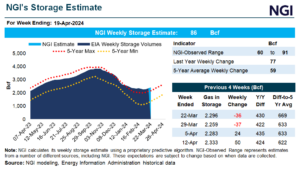Markets | LNG | Natural Gas Prices | NGI All News Access | Shale Daily
Analysts See Signs of Tighter Balances as Natural Gas Futures Claw Back a Few Pennies
© 2024 Natural Gas Intelligence. All rights reserved.
ISSN © 1532-1231 | ISSN © 2577-9877 | ISSN © 2158-8023 |



